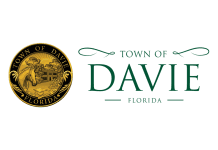
|
Getting your Trinity Audio player ready...
|

Charles Deering always had an art patronage, supporting multiple artists from all genera of media. The Deering Estate makes sure to uphold that legacy with the Artists in Residence Program. It allows young artists to receive studio space to pursue their artistic projects in the visual, literary, and performing arts. Artists may also connect with other artists and the public while experiencing the historical, architectural, and natural elements of the Estate. Since 2006, they have welcomed over 70 shared and collaborative residencies with a wide range of practices, from traditional to contemporary.
Artists gain amazing benefits from being part of the program, including a designated studio space from 7 am to 7pm with no rental or utility fees. The Estate gives artists the freedom to access archives, education and interpretive staff, and partnership opportunities for grants. They may also gain promotion through the Artist in Residence webpage, press releases, and listings in the Estate’s quarterly calendars. Exhibits and events are also held throughout the year like the Deering Spring Contemporary, for artists to show off their work. Artist exhibits will also be posted and archived on the Deering Estate website and the Deering Estate Arts Magazine.
There are two types of residencies available: On-site Studio Artist in Residence Program and Non-Studio Project Residencies. The studio program normally lasts about 6 months while the non-studio program depends on the estimated time of the proposed project made during consultation. Permanent studio space is not provided in the non-studio program, however, both programs allow access to the resources at Deering Estate. They have their differences, but they each offer their own unique advantages to each artist.
In order to apply, the artists must go through an application process and meet certain eligibility requirements. For example, artists must be 18 years of age or older and be able to supply their own tools. Each residency option also has its own specific conditions to apply and more information can be found on the Deering Estate website under the Artists in Residence section (https://deeringestate.org/arts/artists-in-residence/). Applications will reopen for 2021.
Melissa Diaz, who is the head of the Artists in Residence program, answered a few questions about her own background, the future she sees with the artists, and what makes the program special.
Q: What is your background in art?
A: I’m not an artist, and rather have always seen myself as a super supporter of the arts or fan girl if you will. I have an MA in Art History mainly because I wanted to take as many classes in as many different areas of art history as I could. I’ve spent most of my career working in Miami, but I’ve been lucky enough to work for great institutions and artists in New York as well as Italy. My first art love was Monet’s Water Liles series when I saw them in a book as a young girl. I spent most of my academic career focusing on modern Italian art & design as well as contemporary Cuban art and Land art from the 1960s & 70s. I’ve taught Art History and Museum Studies, and worked in galleries and museums, so being at Deering really feels like a good culmination of all these experiences.
Q: How long have you been running the Artists in Residence Program? And what is your favorite part about this job?
A: I’ve been at the Deering Estate for a year and half, but I’ve been visiting and following the artist in residence program for a long time. Jennifer Tisthammer, the Deering Estate Director and Kim Yantis, my predecessor did an amazing job in building this program from the ground up and cultivating wonderful artists into this program. The best part of my job is that I get to work artists on daily basis. The best jobs are those where you are constantly learning and working with new ideas. In this role, I get to explore so many interesting subjects and processes all the time and I really cherish that perk of this job.
Q: What do you believe is one the best benefits from being an artist in residence at Deering Estate?
A: Connecting with the natural environment and the vast history of the land that the estate sits on is really unique. Our history dates back over 10,000 years, and connecting with those stories, that history is singular and powerful. Each artist reacts to that differently and it is a pretty powerful place for creative energy.
Q: What qualities do you look for when choosing artists for the program?
A: The best candidates for the AIR program are those that develop the strongest connections to the Deering Estate. I’ve been able to give several artists walkthroughs and tours of the estate and have been able to witness when someone really connects or sees something that they can cultivate into a new work or project. This also can come through in the proposal process. The strongest applications are always with artists that have considered how they can use the resources at the Deering Estate to push their work forward. When the creative spark is lit, it’s pretty unmistakable and incredibly powerful. Those that feel it here, tend to be the most successful.
Q: What is your vision about the future of the program?
A: I’d like to continue to expand the program and honor Charles Deering’s legacy of supporting artists over a long period of time and throughout their careers. I’d like to develop a way for past and current artists who have participated in the residency to continue to engage with the Deering Estate through projects or exhibition programs. Both Michelle Grant-Murray and John William Bailly are two artists who have been working at the Deering Estate for many years and developed strong bodies of work here. Michelle through her ongoing series, The Black Artist Talk series, as well as many performances. John as our current artist in residence Fellow has been a great programming partner, including bringing the presidential inaugural poet Richard Blanco to give a reading of his work here at the Stone House.
Q: Do you have any favorite artworks created by the artists?
A: That’s a great question, and a difficult one to answer. It would really depend on when you ask me. I think overall, there are my favorite experiences with each work of art… things that I hold on to as a result of being part of their creation. I helped shovel dirt onto Kerry Phillips’ outdoor earthwork Midden, and as result really felt connected to that work and the grounds of Deering. I learned to identify species of birds from working with Gretchen Scharnagl in her Migration exhibition, and about Charles Deering’s tapestry collection from Laura Marsh’s research during her residency. Each of those takeaways and memories are really my favorite part about the works and the job; and I have them for each of the artists I’ve had the privilege of working with.
You can go experience some of the artwork currently being showcased at the Deering Estate during the Spring Contemporary, from May 18 to October 31, and Evening by the Bay, on September 23 at 6pm. Both exhibits will give visitors the opportunity to see the remarkable and unique art being created by these Artists in Residence.








